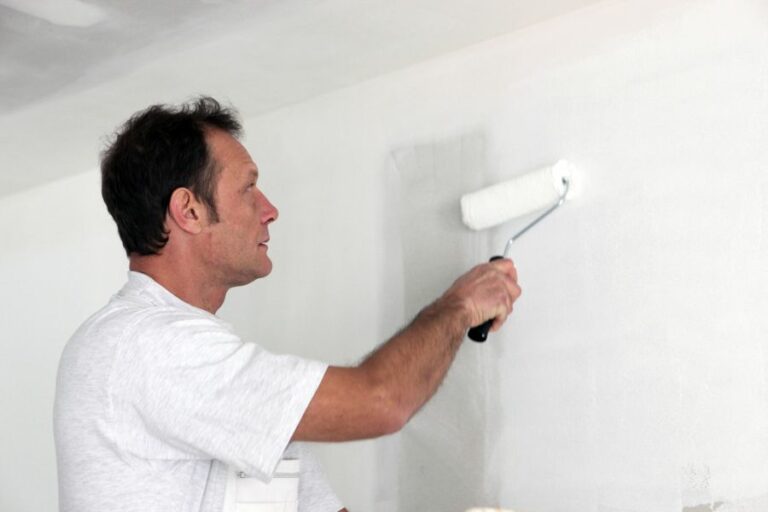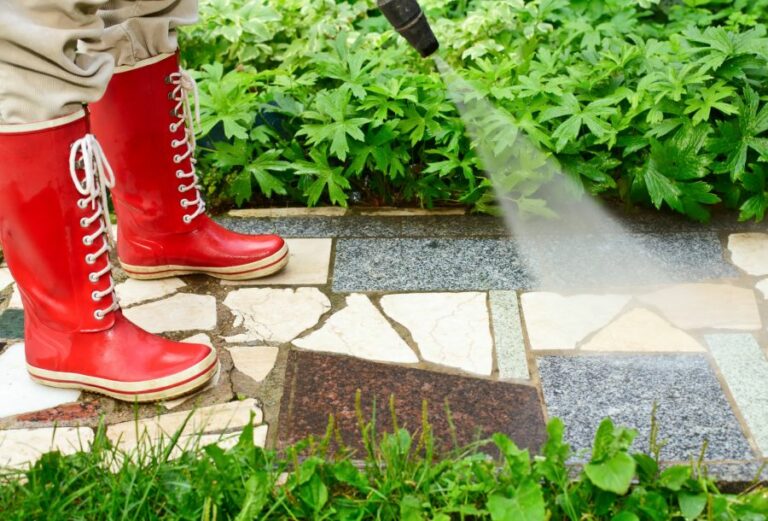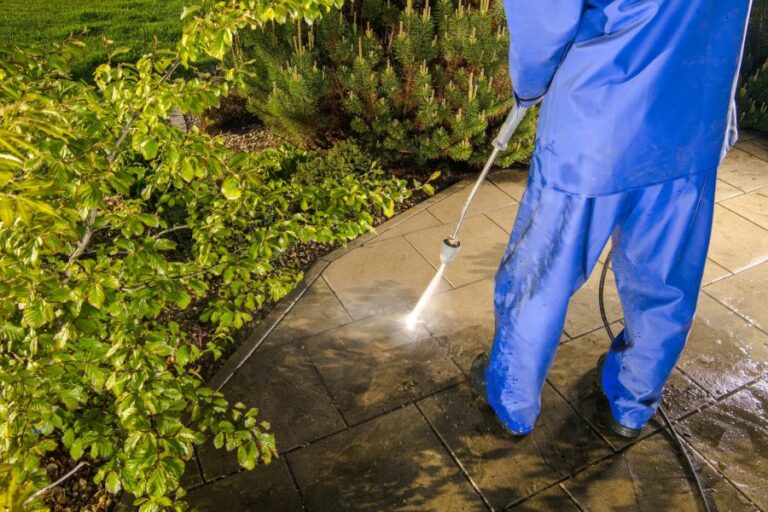Concrete Crack Repair And Filling, 25 Things You Should Know
Addressing concrete cracks in a timely manner is crucial to maintaining the structural integrity and aesthetics of any building or surface. Luckily, with the right guidance and materials, repairing and filling these cracks can be manageable, even for non-professionals.
Concrete crack repair and filling:
Concrete crack repair and filling involve selecting appropriate repair materials like flexible sealants, patching compounds, or epoxy injections, preparing and cleaning the crack, applying the chosen repair material, and allowing it to cure. To maintain the structure’s integrity, follow proper construction practices, use reinforcements, control joints, and conduct regular inspections.

Discover how to effectively repair and fill concrete cracks in this comprehensive guide. Dive into the various techniques, materials, and preventative measures to ensure a long-lasting, flawless finish. Don’t let the cracks bring you down. Read on and get your concrete looking as good as new!
Contents
- 1 Repairing and Filling Concrete Cracks Efficiently
- 2 Optimal Techniques for Deep Concrete Crack Filling
- 3 Top Products for Large Concrete Crack Repair
- 4 Choosing the Right Cement for Concrete Crack Filling
- 5 Comprehensive Guide to Concrete Crack Repair and Filling
- 6 The Benefits of Properly Filling Cracks in Concrete
Repairing and Filling Concrete Cracks Efficiently
Cracks in concrete are a common occurrence and can lead to serious structural issues if not properly repaired. This comprehensive guide will discuss the types of cracks, why they occur, how to repair them and share expert advice to maintain the integrity of your structure.
• Types of Concrete Cracks
– Shrinkage Cracks
Shrinkage cracks are caused by the evaporation of water in the concrete as it dries. These cracks are generally small and often occur in a random pattern. Although they may not pose a serious structural threat, they can detract from the appearance of your concrete.
– Settlement Cracks
Settlement cracks occur when the ground underneath the concrete shifts, causing the concrete to crack in response. This type of crack can range in size from small hairline cracks to larger, more severe cracks. Settlement cracks may indicate an issue with the foundation of your structure.
– Structural Cracks
Structural cracks are often large, well-defined cracks that indicate a more severe issue with the underlying structure. They are usually caused by excessive loads or poor construction techniques and should be addressed as soon as possible to protect the integrity of your structure.
• Causes of Cracks in Concrete
There are several factors that can cause concrete cracks. Some of the most common culprits include:
- Changes in temperature
- Excessive weight on the concrete
- Improperly mixed concrete
- Poor construction practices
- Ground movement (settlement or heave)
You can take preventative steps to reduce the risk of cracking. For example, including joints to allow for expansion and contraction, using suitable materials, and adhering to proper construction practices are all effective ways to minimize the risk of concrete cracks forming.
• Repairing Hairline Cracks
1. Choose the Right Repair Material
The first step in repairing hairline cracks is to select the appropriate repair material. In most cases, using a flexible sealant (like rubberized asphalt or polyurethane caulking) is the best choice, as these materials have a higher tolerance for movement and can help to prevent future cracks from forming.
2. Prepare the Crack for Repair
Before applying the sealant, ensure that the crack is free of any debris, dust, or loose material. If the crack is large, you may need to use a small brush, like a wire brush, to remove any loose material.
3. Apply the Sealant
Using a caulking gun or other applicator, apply the sealant to the crack. Make sure to push the material down into the crack so that it fully fills the void. Afterward, smooth out the surface of the sealant with a trowel or other tool to create a flat, even finish.
4. Allow to Cure
Once the sealant has been applied, it’s essential to allow it to cure for the recommended time before exposing it to any heavy loads or weather conditions.
• Repairing Larger Cracks
For larger cracks, there are additional steps involved in the repair process. Before beginning, consider consulting a qualified professional to ensure that the proper repair method is employed.
1. Choose the Correct Repair Material
For larger cracks, a patching compound or epoxy injection may be the most appropriate repair material. These materials are durable and can help to restore the structural integrity of the cracked area.
2. Chisel Out the Crack
To properly repair a larger crack, you will need to chisel out the damaged area. This helps to create a clean, well-defined space for the repair material to adhere to.
3. Clean the Crack
As with hairline cracks, it’s crucial to clean out the chiseled area thoroughly to ensure the repair material will adhere correctly. Use a brush or vacuum to remove any dust or debris from the crack.
4. Apply the Repair Material
Apply the patching compound or epoxy injection to the crack, filling it completely to ensure proper bonding. If required, use a trowel or other tool to smooth out the surface of the repair material.
5. Allow to Cure
As with hairline cracks, it’s essential to allow the repair material to cure fully before exposing it to any heavy loads or extreme weather conditions.
• Recommendations for Concrete Crack Maintenance
Preventing cracks from forming in the first place is always preferable to repairing them after the fact. In order to minimize the occurrence of cracks in your concrete, consider the following expert recommendations:
- Ensure that the concrete mix is properly proportioned and mixed
- Take care to use appropriate reinforcement (rebar, mesh, or fibers)
- Adhere to proper curing techniques to avoid premature drying
- Use control joints to allow for movement and minimize cracking
- Inspect your concrete structure regularly for signs of cracking or other damage
For more information on concrete crack repair and maintenance, refer to the American Concrete Institute for publications, guidelines, and other educational resources.
Type | Description | Tools and Materials |
|---|---|---|
Epoxy Injection | Epoxy is injected into the crack under pressure, filling it and bonding the two surfaces together. This method is usually used for structure repairs. | Epoxy resin, injection ports, epoxy gun, paste-over materials, pressure supply equipment |
Polyurethane Injection | Polyurethane foam expands upon contact with water to fill the crack, creating a flexible seal. This method is used for sealing leaks and non-structural cracks. | Polyurethane resin, injection ports, epoxy gun, pressure supply equipment |
Routing and Sealing | The crack is cut in a wider U or V shape and filled with a flexible sealant. This method is mainly used for working cracks and non-structural cracks. | Crack chaser or grinder, flexible sealant, caulking gun, spatula or trowel |
Stitching (Cross-Stitching) | U-shaped metal staples are installed across the crack, and the area is grouted. This method is used for structural cracks and to prevent crack propagation. | Metal staples, epoxy or grout, drill, hammer, spatula, or trowel |
Overlays and Surface Treatments | A layer of polymer-modified cement or resin is applied to fill and cover the crack, improving the appearance and functionality of the surface. This method is mainly used for non-structural cosmetic repairs. | Resurfacing material, trowel or screed, mixing equipment |
Optimal Techniques for Deep Concrete Crack Filling
Cracks on concrete surfaces are not only unsightly but can also lead to structural issues if they are not addressed properly. Repairing deep cracks requires proper technique, appropriate filler material, and the right tools.
• Assess the Condition of the Crack
– Determine the Depth and Width of the Crack
The first step is to assess the size and overall condition of the crack. Use a ruler or measuring tape to determine the depth and width of the crack.
If the crack is deeper than 1/4 inch or wider than 1/2 inch, it is considered a deep crack. These dimensions are important when selecting the appropriate filler material.
– Evaluate the Cause of the Crack
After measuring the size of the crack, it’s important to identify the cause. Common reasons for concrete cracks include:
- Concrete shrinkage during the curing process
- Heavy loads or pressure placed on the concrete surface
- Settlement or movement in the underlying soil
- Corrosion of steel reinforcement bars embedded in the concrete
Determining the cause of the crack will help in selecting an appropriate repair method and avoiding any potential reoccurrence of the issue.
• Choose the Right Filler Material
– Consider the Crack Size
As deep cracks can be of varying sizes, it’s important to select the appropriate filler to adequately fill the void. Listed below are some common filler materials for deep cracks in concrete:
- Epoxy injection: Epoxy injection is an effective solution for filling deep, narrow cracks. Epoxy resin is a two-component system that, when mixed, forms a strong bond with the concrete. This method is best suited for cracks smaller than 1/4-inch wide.
- Cementitious grout: Cementitious grout is a concrete-based filler, ideal for larger cracks that are stable or non-moving. This type of grout is more affordable than epoxy and can easily fill cracks up to 1/2-inch wide.
- Polyurethane foam: Polyurethane foam is a flexible filler capable of expanding and contracting with the concrete’s movement. It is ideal for filling large, moving cracks that are 1/2-inch wide or more.
– Consider the Structural Requirements
The filler material you choose should have similar structural properties to the surrounding concrete. For structural cracks, opt for a filler with high compressive strength, such as epoxy or cementitious grout. For non-structural cracks, consider using more flexible materials like polyurethane foam.
• Preparing the Crack for Repair
– Clean the Crack
Before applying the filler, it’s essential to clean the crack to ensure proper bonding. Remove loose debris and dust using a wire brush, a vacuum cleaner, or compressed air. Be sure to clear any vegetation or dirt from the crack’s edges.
– Apply a Crack Sealer (Optional)
Applying a concrete crack sealer can help prevent water infiltration and subsequent damage. This step is optional but recommended for deep, deteriorated cracks. In this case, use a suitable crack sealer compatible with the chosen filler material.
• Fill the Crack with the Selected Filler Material
– Apply the Filler
- For epoxy injection, use a dispensing gun or a syringe to inject the epoxy resin into the crack, starting at the bottom and moving upwards. Keep applying pressure to ensure the material fills the entire crack.
- For cementitious grout, mix the grout according to the manufacturer’s instructions and use a trowel or a putty knife to press the material into the crack. Smooth the surface to achieve a consistent finish.
- For polyurethane foam, dispense the foam directly into the crack using the provided applicator. The foam will expand to fill the void, so be careful not to overfill. Trim any excess foam once it has cured.
– Allow the Filler to Cure
Follow the manufacturer’s recommendations regarding curing time for the chosen filler material. Generally, epoxy and cementitious grout require at least 24 hours to cure, while polyurethane foam cures within 15-30 minutes.
• Final Thoughts
Filling deep cracks in concrete can be a straightforward process when following the proper steps and using suitable materials. Always remember to consider the size, depth, and cause of the crack when selecting a filler material.
Prepare the crack by cleaning it thoroughly and, if needed, apply a crack sealer. Apply the chosen filler following the manufacturer’s recommendations and ensure it has ample time to cure.
For more information on concrete crack repair, refer to the Portland Cement Association website, a non-profit organization providing resources for concrete professionals.
Step | Description |
|---|---|
1. Clean the crack | Remove any loose debris, dirt, and dust using a wire brush or shop vacuum. |
2. Apply a concrete adhesive | Apply a concrete bonding adhesive to the crack’s sides to ensure a strong bond between the new and old concrete. |
3. Fill with a concrete repair mix | Fill the crack with a pre-blended concrete repair mix, or prepare a mix using sand, Portland cement, and water. Pour the mix into the crack gradually, working from one end to the other. |
4. Tamp the mix | Press and compact the mix into the crack using a trowel or small flat board. |
5. Smooth the surface | Smooth the surface of the repair mix to make it level with the surrounding concrete. If desired, apply a broom finish for a textured appearance. |
6. Cure the repair | Allow the repair to cure for at least 24 hours, keeping it moist by misting it with water or covering it with a damp cloth. After curing, the crack should be fully repaired. |
Top Products for Large Concrete Crack Repair
When it comes to repairing large cracks in concrete, the right product not only ensures a strong and durable repair but also saves time and effort.
• Evaluating the Crack
Before discussing the products to fix large cracks in concrete, it is essential to evaluate the crack’s size and its cause. This will help in determining the most suitable product for repairing it:
- Width of the crack: Large cracks in concrete are typically more than 1/4-inch wide. Products used for repairing wider cracks must provide good bonding and strength.
- Depth of the crack: In addition to width, the depth of the crack also determines the suitability of a product. Some products work better on shallow cracks, while others are suited for deep cracks.
- Cause of the crack: The reason behind the crack formation, whether due to structural damage, settlement, or temperature variations, also influences the choice of repair material. Some specialized products are designed to cater to specific causes.
• Major Types of Concrete Crack Repair Products
There are several types of products available in the market to repair large cracks in concrete, but we will focus on the most common and effective ones:
– Epoxy Injected Crack Repair
Epoxy injection is best suited for repairing large cracks with structural implications. It not only seals the crack but also restores the structural integrity of the concrete. Epoxy is a low-viscosity material that allows it to penetrate easily into the crack, providing a durable and strong bond.
However, it is important to note that epoxy injection requires professional expertise and is not suitable for DIY repairs.
– Polyurethane Foam Crack Filler
Polyurethane foam is an excellent choice for filling large, deep, and active cracks. It is a flexible material that can accommodate movement and expand or contract with temperature changes.
The foam effectively seals the crack and also prevents water ingress, making it ideal for use in basements and other areas susceptible to water seepage.
– Cementitious Patching Compound
Cementitious compounds are best suited for non-structural, large cracks in concrete. These products contain sand, cement, and other additives that provide good adhesion and strength. The repair is simple, as it involves mixing the compound with water and applying it to the crack, followed by curing.
However, cementitious compounds are not flexible and may not be suitable for active cracks or those susceptible to further movement.
• Expert Recommendation: Epoxy Resin Mortar
In our experience, the best product to fix large cracks in concrete is epoxy resin mortar. It has several benefits that make it suitable for a wide range of applications and offers a durable, strong, and long-lasting repair. Some notable advantages of epoxy resin mortar are:
- High strength and adhesion: Epoxy mortar offers exceptional bonding properties, which make it an ideal choice for structural repairs. It also provides higher compressive strength than conventional cementitious mortars.
- Moisture resistance: Epoxy mortar is a non-porous material, effectively preventing water ingress and providing excellent resistance to chemical attacks.
- Compatibility with old and new concrete: Epoxy mortar is compatible with different types of concrete, making it versatile for various repair scenarios.
- Ease of application: Epoxy mortar is easy to mix and apply with the right tools and expertise. It can also be used for vertical and overhead repairs.
In conclusion, the best product to fix large cracks in concrete is epoxy resin mortar, as it offers high strength, excellent adhesion, good moisture resistance, and compatibility with different types of concrete.
However, one must remember that repairing structural cracks requires professional expertise to ensure safety and long-term durability. For more information on concrete repair techniques, visit the American Concrete Institute’s website for comprehensive guidelines and standards.
Product Name | Application |
|---|---|
Sika Concrete Fix Kit | Designed to fix large cracks in concrete |
Quikrete Concrete Crack Sealant | Designed for large cracks in sidewalks, driveways, and patios |
Rust-Oleum Concrete Patch & Repair | Suitable for a variety of concrete surfaces |
Choosing the Right Cement for Concrete Crack Filling
Identifying the appropriate cement to fill concrete cracks is essential for ensuring a long-lasting repair. The suitable product depends on various factors, like the size of the crack, the surrounding infrastructure, and budget constraints.
• Understanding Different Types of Cement
To choose the right cement for filling concrete cracks, it’s vital to understand the differences between various types of cement. The most commonly used types of cement are:
1. Ordinary Portland Cement (OPC)
OPC is a general-purpose cement widely used for regular concrete construction. It offers excellent durability, making it suitable for various structural applications. OPC is available in different grades like 33, 43, and 53, indicating the compressive strength (in MPa) after 28 days.
I recommend OPC for large-scale projects where high strength and durability are required. However, this cement might not be suitable for repairing small concrete cracks, as it tends to shrink and develop cracks over time.
2. Portland Slag Cement (PSC)
PSC is a blended cement made by combining Portland cement clinker, granulated blast furnace slag, and gypsum. It offers better resistance to chemical hazards compared to OPC, making it an excellent choice for structures exposed to harsh chemicals or climates.
If you are looking to repair cracks in structures like sewer lines or coastal buildings, PSC is a preferable choice because of its improved resistance to aggressive environments.
3. Portland Pozzolana Cement (PPC)
PPC is also a blended cement made by combining Portland cement clinker, fly ash, and gypsum. Due to the presence of fly ash, PPC offers high resistance to chemical attack, as well as reduced heat of hydration and improved workability. It is suitable for both general construction and crack repairs.
For small-scale projects or residential repairs, I recommend using PPC instead of OPC, as it offers better resistance to shrinkage and cracking.
Additionally, using PPC reduces the environmental impact by utilizing waste materials like fly ash, which would otherwise be discarded.
• Patching Compounds and Grouts for Crack Repair
Besides traditional cement types, there are products specially formulated for concrete crack repair. These include patching compounds and grouts that offer improved workability and shrinkage.
I recommend considering these products if you need a quick and less labor-intensive solution.
1. Polymer-Modified Cementitious Repair Mortar
Polymer-modified cementitious repair mortars are specially formulated to repair cracks and honeycombing in concrete. With the addition of polymers, these mortars offer excellent adhesion, minimization of crack reoccurrence, and improved durability.
For larger cracks, I recommend using a polymer-modified cementitious repair mortar, as it provides a strong bond with the existing concrete and ensures a long-lasting repair. Before application, clean the crack and saturate the surface with water to ensure proper adhesion.
2. Epoxy Grout
Epoxy grout is a non-shrink, non-corrosive, high-strength material used to repair cracks and fill voids in concrete structures. It is a two-component product that requires mixing epoxy resin and hardener.
Epoxy grouts offer excellent resistance to chemicals and moisture, as well as an impressive bond strength that can be up to four times stronger than concrete.
I would recommend using epoxy grouts for repairing cracks in industrial structures or areas exposed to heavy traffic, chemicals, or moisture. However, epoxy grouts are not suitable for all applications, as they may not bond well with wet or ultra-smooth surfaces.
• Final Thoughts
Choosing the right cement for filling concrete cracks depends on various factors, such as the size and location of the crack, as well as environmental and budget constraints.
While traditional cement like OPC and PPC can be suitable for various applications, specialized products like polymer-modified repair mortars and epoxy grouts offer an improved repair solution.
For additional guidance, consult the Portland Cement Association – a non-profit organization that offers extensive resources on various cement types and their applications.
Remember, a successful repair depends not only on choosing the right cement but also on proper surface preparation and adherence to recommended application guidelines.
Comprehensive Guide to Concrete Crack Repair and Filling
Concrete is an essential building material for various construction projects, and it’s crucial to maintain its integrity for the structure’s durability. However, over time, cracks can appear in concrete due to various factors such as expansion, contraction, or applied pressure.
• Identifying and Assessing Concrete Cracks
Before any repair work can take place, it’s essential to identify the type of crack and determine its severity. There are various types of concrete cracks, which include:
- Shrinkage cracks: Formed during the curing process and are relatively small, less than 1/8 inch wide.
- Settlement cracks: Result from the uneven ground below the concrete surface and may appear wider and deeper.
- Structural cracks: Caused by external loads or foundation issues, these can lead to structural damage if left unattended.
Once you’ve identified the type of crack, assess its depth and width. This information will help determine the best repair method and products to use.
• Choosing the Right Repair Materials
There are several products available for filling and repairing concrete cracks, depending on their severity and location. Some common repair materials include:
- Concrete patching compound: Best for smaller, shallow cracks.
- Epoxy or polyurethane injection: Ideal for narrow, deep cracks.
- Concrete caulk or sealant: Suitable for sealing joints and filling gaps between concrete surfaces.
- Mortar repair mix: Useful for larger, deeper cracks that require more substantial filling.
Select the appropriate repair material based on the crack’s size and depth, as well as your budget and time constraints.
• Preparing the Crack for Repair
Before filling or repairing the crack, ensure the area is clean and free from loose debris. Follow these steps to prepare the crack for repair:
- Use a wire brush or power tool to remove any loose concrete or debris from the crack.
- If necessary, widen the crack using a chisel and hammer to create an inverted “V” shape. This allows the repair material to adhere better to the concrete and provides a more durable repair.
- Clean the crack with a shop vacuum or air compressor to remove dust and debris.
- If you’re using a water-based repair material, such as a patching compound, dampen the crack lightly, but avoid filling it with water. Epoxy and polyurethane injections typically require dry surfaces for optimal adhesion.
• Filling and Repairing the Concrete Crack
With the crack clean and prepared, you’re now ready to apply your chosen repair material. Follow these steps for a successful repair:
– For Patching Compound:
- Using a trowel or putty knife, apply the patching compound into the crack, ensuring it’s filled completely.
- Smooth the surface of the repair to match the surrounding concrete.
- Allow the patching compound to cure according to the manufacturer’s instructions before resuming the use of the surface.
– For Epoxy or Polyurethane Injections:
- Place the injection ports along the crack, securing them in place with epoxy adhesive.
- Mix the epoxy or polyurethane solution according to the included instructions.
- Starting at the lowest injection port, inject the repair material into the crack until it begins to ooze out the next port.
- Remove the ports once the repair material is fully cured, and sand or grind the surface smooth if desired.
– For Concrete Caulk or Sealant:
- Load the caulk gun with the appropriate sealant, cutting the nozzle to the desired bead width.
- Apply a continuous bead of sealant along the crack, ensuring it penetrates the full depth of the crack.
- Smooth the sealant with a trowel or caulking tool, shaping it to match the surrounding concrete.
- Allow the sealant to cure as recommended by the manufacturer before resuming use of the area.
– For Mortar Repair Mix:
- Mix the mortar repair mix according to the included instructions.
- Use a trowel to apply the mortar mix into the crack, compacting it tightly.
- Smooth the surface of the repair to match the surrounding concrete.
- Allow the mortar mix to cure as instructed before resuming the use of the surface.
• Conclusion
Filling and repairing cracks in concrete surfaces is a vital aspect of proper maintenance and structural integrity. By following the steps outlined in this article, you can effectively repair cracks and ensure your concrete surfaces stand up to the test of time.
For additional information and resources on concrete repair, visit the Portland Cement Association or the American Concrete Institute. These organizations offer valuable insights and best practices for concrete maintenance and repairs.
Step | Instructions |
|---|---|
1 | Inspect the cracks in the concrete to determine their size and severity. |
2 | Clean out the cracks, removing any dirt, debris, or loose concrete with a broom or vacuum. |
3 | For small cracks, apply a concrete patching compound with a putty knife, forcing it into the crack, and then smooth the surface. |
4 | For larger cracks, use a chisel and hammer to enlarge the crack and remove any loose concrete. |
5 | Apply a concrete bonding adhesive to the inside of the crack and surrounding area to help the patching material bond to the existing concrete. |
6 | Mix a batch of concrete patching compound or sand mix, following the manufacturer’s instructions. |
7 | Apply the patching material to the crack, using a trowel to push the material into the crack and to smooth the surface. |
8 | Allow the patching material to cure according to the manufacturer’s recommendations, typically 24-48 hours. |
9 | Seal the repaired area with a concrete sealer to protect it from water infiltration and future cracking. |
The Benefits of Properly Filling Cracks in Concrete
• The Importance of Repairing Concrete Cracks
Repairing cracks in concrete structures, such as driveways, sidewalks, or patios, is essential to maintain the structural integrity and aesthetic appearance of the construction.
If left unattended, these cracks can develop into more significant issues that may compromise the structure’s stability and durability. Furthermore, water can seep into these cracks, leading to erosion, corrosion, damage to the reinforcing steel, and the growth of mold and mildew.
As a result, it is crucial to address cracks as soon as they appear. Sealants and crack fillers can effectively repair the damage, prolong the life of the structure, and preserve its safety and appearance.
• Identifying the Type of Crack
Before repairing the cracks, it is crucial to distinguish their nature and cause. Typically, concrete cracks can be categorized into two types: active and dormant. While active cracks continue to expand, dormant cracks have stabilized and do not grow.
Identifying the crack type enables selecting the appropriate repair method and material. Active cracks require flexible sealants that can accommodate the crack’s movement, while dormant cracks can be repaired using a rigid filler.
In some cases, repairing the cracks may necessitate addressing the underlying cause, such as soil settlement, tree root intrusion, or drainage issues. The American Concrete Institute provides additional resources and guidelines for understanding, evaluating, and repairing concrete cracks.
• Choosing the Right Repair Material
Various repair materials are available in the market, primarily classified into rigid and flexible materials. Rigid materials, such as cementitious grouts or epoxies, are used for dormant cracks that do not exhibit any movement.
These materials create a strong bond with the concrete and restore its integrity. However, their rigidity may not withstand the movements in active cracks, causing the repair to fail.
On the other hand, flexible materials, such as silicone, urethane, or polyurethane caulks, are ideal for active cracks, as they can accommodate the crack’s movement without compromising their performance. These materials form a weather-resistant seal that prevents water intrusion and further damage.
To ensure the best results, carefully consider the crack’s characteristics, such as size, depth, and location, to select the most suitable repair material.
• The Crack Repair Process
Once the appropriate repair material has been selected, follow these steps to ensure a successful repair:
1. Clean the Crack
Remove any loose debris, dirt, or dust from the crack using a wire brush or a similar tool. This step is essential for creating a clean and solid surface for the repair material to adhere to. If necessary, use a vacuum or compressed air to remove any remaining debris.
2. Apply the Repair Material
For rigid materials, follow the manufacturer’s instructions to mix and apply the material correctly. Generally, the material is poured or troweled into the crack, ensuring it fills the entire void.
For caulks and sealants, use a caulking gun to apply consistent beads along the length of the crack, tooling it gently to ensure a smooth and clean finish.
Always follow the manufacturer’s guidelines regarding curing times before using or applying any loads to the repaired structure.
3. Monitor and Maintain the Repair
After completing the repair, regularly examine the area for any signs of recurring damage, particularly in active cracks. In some cases, multiple repairs may be necessary to resolve the issue permanently.
• Final Thoughts
In conclusion, filling cracks in concrete is a critical step in maintaining the structure’s integrity, durability, and aesthetic appearance.
By adequately evaluating the type and cause of the crack, selecting the appropriate repair material, and following proper repair procedures, you can prolong the life of your concrete structures and ensure their continued performance and safety.
Remember to always consult professional advice if you are unsure about the repair process or encounter any complications during the repair to ensure the best outcome.







